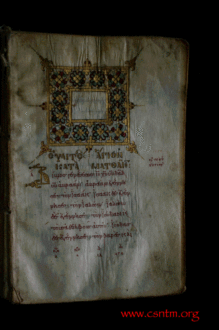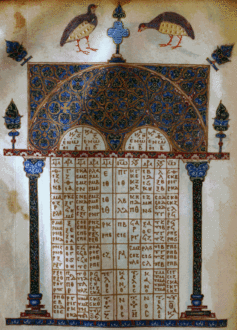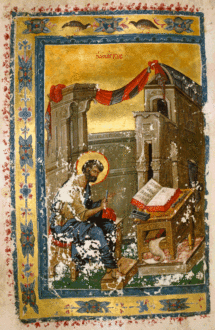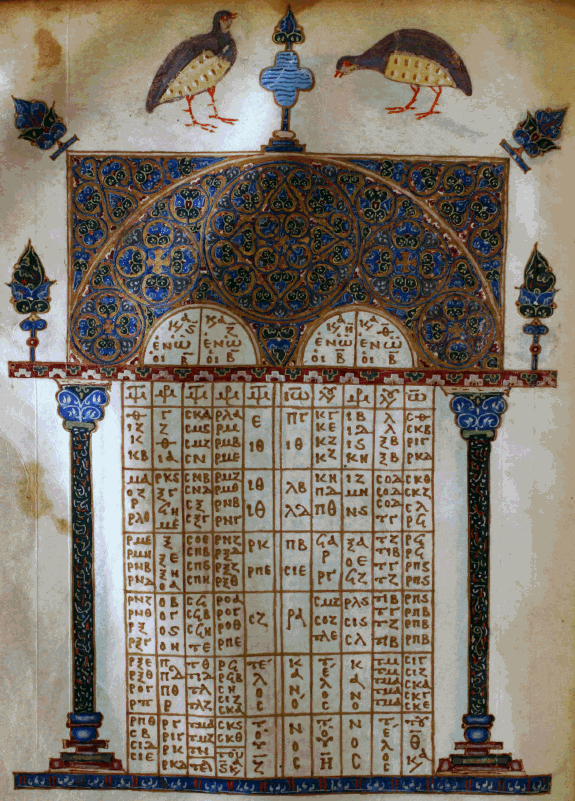


Picture this: it's the summer of 2007, and I'm diving headfirst into a history lesson like no other. The story unfolds in the heart of Albania, where a bunch of thirteen Greek New Testament manuscripts were quietly hanging out in the National Archive in Tirana. What's the big deal, you ask? Well, these manuscripts were like hidden gems, waiting for their moment to shine.
Now, I'm no history buff, but this story had me hooked. Scholars from all over the place had been trying for ages to get their hands on these manuscripts. The thing is, Albania used to be a bit of a closed book, being a former police state and all. So, only two of these manuscripts had ever been caught on camera, and that happened decades ago. But guess what? Things were about to change.
Fast forward to December 2006, and I'm wearing my director hat at the Center for the Study of New Testament Manuscripts (CSNTM). We're all about preserving old copies of the New Testament, but not just any old copies—these are the real deal, handwritten way back in the day. So, I send a letter to Dr. Nevila Nika, the big cheese at the National Archive, asking if we can take our cameras and snap some pics of these hidden manuscripts.
Our Center had done this kind of thing before, in places like Istanbul and Greece. But Albania was a new chapter in our book of adventures. Armed with fancy cameras, laptops, and enough batteries to light up a city, we were ready to roll. We'd shoot each page separately, just in case you were wondering. And if a page had some secret erased text, we'd whip out some UV light to bring it back to life. Everything had to run on batteries because, hey, you never know about the power situation in a foreign land.
So, there we are, July 2, 2007, setting foot in Tirana with a team of four. And guess what? The plot thickens. The catalog said there were only thirteen manuscripts, but guess what? Seventeen more pop out of the woodwork, saying, "Surprise, we're here too!" It was like a manuscript party.
But wait, there's more. Turns out, these manuscripts had been like missing puzzle pieces. The smarty-pants scholars had lost track of them, and the catalog from way back in 1994 was like, "Uh, we don't know where these guys went." It's like trying to find missing socks, but way more complicated.
The thing is, these manuscripts had been moved around so much that they didn't even have proper name tags anymore. Imagine trying to identify a book in a library without its title on the spine. Yep, that's the level of challenge we were dealing with.
So, armed with cameras, computers, and a passion for history, we got to work. Click after click, we were uncovering ancient secrets. We found manuscripts that no one had seen before, and that's a big deal in the world of ancient texts. And let me tell you, some of these manuscripts had a cool backstory.
Take Codex Beratinus, for example. This thing is old—like, sixth-century old. It's royal, written in purple ink with gold and silver letters. It's like the king of manuscripts. Or how about Codex 1143? Also purple, also royal, but from the ninth century. These manuscripts were like celebrities in the manuscript world.
Now, imagine this: we're taking pictures, battery-operated gadgets in hand, while dealing with power outages and 100-degree heat. It's like a reality show, but way nerdier. We're capturing pages that haven't seen the light of day for ages. And the cool thing? Not a single page got hurt in the process.
Back home, we're pouring over these images, putting together a jigsaw puzzle of history. It's like playing detective, but with ancient handwriting. Students are digging into the images, trying to piece together the stories that these manuscripts hold. It's like looking through a window into the past, and man, it's exciting.
As time goes on, I'm realizing that this journey isn't just about manuscripts. It's about unearthing stories, preserving memories, and connecting with the past. These manuscripts aren't just old books; they're like time capsules, carrying whispers of the people who wrote them. And I'm lucky to be part of this journey—a journey that's about more than words on a page. It's about the people who wrote those words and the world they lived in.
So, let's raise a toast to the adventure of a lifetime—the one that took me from modern life to the mysteries of ancient manuscripts. It's a journey that keeps on giving, and I can't wait to see where it takes us next.
In June 2007, a revelation shook the world of New Testament scholarship—a treasure trove of thirteen Greek New Testament manuscripts lay hidden in the National Archive of Tirana, Albania. This discovery ignited excitement among Western scholars who had long sought access to these manuscripts. The journey to unveil these hidden gems, however, was not without its challenges. A significant factor that impeded access was Albania’s history as a former police state, which made it difficult for scholars to investigate these literary treasures. Among the known manuscripts, only two had ever been captured through microfilm decades earlier. But a transformative shift occurred in July of that year.
In December 2006, as the executive director of the Center for the Study of New Testament Manuscripts (CSNTM), I initiated a letter to Dr. Nevila Nika, the general director of the National Archive in Tirana. The aim was to secure permission for our team to embark on a crucial expedition: digitally photographing the thirteen manuscripts. CSNTM, a non-profit organization, focuses on digitally preserving ancient handwritten copies of the New Testament using high-resolution images. Our efforts had led us to various renowned locations, from the Ecumenical Patriarchate in Istanbul to the Monastery of St. John the Theologian in Patmos, Greece. The mission to capture the Albanian manuscripts was a significant undertaking, and our team was prepared to leave no stone unturned.
Preparation for such an expedition required meticulous planning. Armed with specialized digital cameras, a four-person team would capture images and store them on external hard drives connected to laptops. These cameras allowed us to photograph up to 1800 pictures a day, accounting for variations in manuscript size and condition. Notably, each page was photographed individually, even those with faint or erased text, which required the use of UV light. Every piece of equipment had to be battery-operated due to unpredictable on-site conditions and electrical reliability. Backup batteries, chargers, tripods, reflectors, and custom-designed cradles for the manuscripts were all essentials on these expeditions. To ensure data security, images were stored in multiple locations and backed up with a RAID system.
In the spring of 2007, the much-awaited response from Tirana arrived: permission granted! A team of scholars and photographers/computer technicians set out for Albania in July, anticipating a two-week venture to capture around 6000 images. However, this journey held far greater revelations than anticipated. The initial catalog suggested the existence of more than thirteen manuscripts, leading to an astonishing discovery—up to seventeen additional manuscripts were tucked away at the National Archive. These manuscripts, believed lost for decades, had been relocated from various locations. This discovery brought to light the challenges faced by Western scholars in tracing these manuscripts due to inaccurate documentation.
The INTF, responsible for cataloging Greek New Testament manuscripts, had listed some of these manuscripts as “formerly” housed in different locations, leaving their current whereabouts uncertain. With the addition of these potentially recovered manuscripts, our task became more intricate. We embarked on a journey to positively identify these newly found treasures, aligning them with INTF catalog numbers to contribute to the scholarly pursuit of preserving and understanding these historical texts.
The journey, however, did not stop there. During the expedition, we stumbled upon manuscripts that Western scholars had not previously cataloged. This disparity between the National Archive catalog and the official INTF records revealed a trove of untapped treasures. The discovery showcased that Tirana was home to manuscripts unknown to Western scholarship. These revelations not only invigorated the field but also fueled our determination to capture their essence.
Our tireless efforts paid off as the team captured images of nearly all 47 manuscripts that were initially identified. Alongside these, we managed to photograph additional manuscripts that had been thought to be New Testament-related. In just under five weeks, our team amassed nearly a terabyte of images—a testament to our dedication to preserving these invaluable pieces of history.
In the aftermath of the expedition, the impact of the discovery resonated far beyond Albania. Back at Dallas Seminary, where I taught a course on New Testament textual criticism, students delved into the images of these manuscripts. Our collective efforts aimed to decipher these treasures, bridging the gap between rediscovery and understanding. This journey to decode history serves as a testament to the enduring importance of preserving and studying ancient texts.
As the fragments of history continue to emerge from the shadows, one fact remains clear: the journey to uncover and comprehend these manuscripts is a collaborative endeavor. The commitment of institutions like the National Archive and organizations like CSNTM underscores the significance of working together to preserve and illuminate our shared past.
My journey, much like the manuscripts themselves, continues. As the excitement of discovery melds with the pursuit of understanding, I am reminded that the journey to reconstruct the original New Testament text is both a scholarly pursuit and a testament to the power of human collaboration. Our ongoing efforts, fueled by the fascination with history and the commitment to preservation, are paving the way for a more comprehensive understanding of the world’s most important texts.

